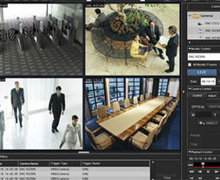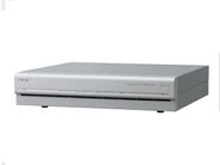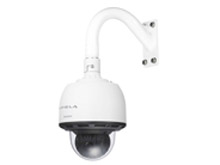 |
| Rapid innovation has led to the availability of new security products that are based on IP formats and HD technology |
However, a new hybrid approach is helping to alleviate the technical issues and costs traditionally associated with switching to a new system and enabling businesses to future-proof their security infrastructure. Sony recognises the potential for hybrid solutions to transform the security industry by driving the adoption of IP technology. It has developed an unrivalled breadth of analogue and IP video security technology, from recorders and cameras, to software, encoders and monitors, that make it uniquely positioned to offer hybrid solutions. Not only does this enable businesses to move from analogue to IP with ease, users can seamlessly integrate standard and HD security equipment, without having to replace their existing security systems.
To this end, flexibility and choice are key motivators for the use of hybrid security solutions. Sony offers users a variety of different ways to go hybrid, allowing customers to upgrade their IT infrastructure according to individual need, not the requirements specified by an upgrade path. Importantly, this allows customers to future proof their systems by overcoming the compatibility issues related to some competitor products. If an analogue camera fails and/or a customer chooses to invest in an IP system before upgrading the full camera infrastructure, Sony offers a range of new products that work on an existing coax infrastructure. For example, all of Sony's IP cameras can work on an existing coax network alongside analogues cameras, allowing users to achieve the benefits of IP such as excellent image quality, audio and intelligence that they would otherwise be unable to access. Similar dexterity is applied to image definition; Sony's megapixel and HD cameras also work together enabling users to move from a standard to HD solution with ease.
 |
| Sony recognises the potential for hybrid solutions to transform the security industry by driving the adoption of IP technology |
Moreover, the NSR-1000 range of network surveillance servers from Sony enables the combined use of analogue and IP-based cameras. The flexible platform allows the servers to record and integrate a wide range of camera formats, from modern IP and megapixel cameras to more traditional analogue cameras, providing an impressive improvement in performance and flexibility. Users can record and manage content from both Analogue and IP cameras until there is the necessity or the desire to upgrade, aiding the seamless transition from analogue to IP.
Sony's encoder range offers similar choice. Users can access the benefits of IP technology without upgrading the existing camera infrastructure or, indeed, replacing incumbent technology with Sony products. The recently launched SNT-EX/EP range of encoders offers complete interoperability and dual streaming capabilities. Customers can move seamlessly to IP by converting existing analogue cameras to an IP-based monitoring system.
Integration in the Sony portfolio is further enhanced through the use of ONVIF compliant interfaces. Incorporated into the majority of new Sony products, an ONVIF compliant interface provides interoperability and compatibility between all network video products regardless of manufacturer. Critically, this helps customers to overcome the integration issues related to legacy systems and embrace new technologies. Sony's complete encoder portfolio and its HD PTZ camera are ONVIF compliant, allowing the simultaneous use of advanced IP-based products with full HD resolution, and more affordable SD analogue technology.
 |
| Sony's megapixel and HD cameras also work together enabling users to move from a standard to HD solution easily |
Ultimately hybrid means choice; users can incorporate new video security products - from IP and to HD - into an existing system infrastructure, migrating at their own pace. Offering improved technology access and interoperability, hybrid should be seen as the future of the video security industry.


















